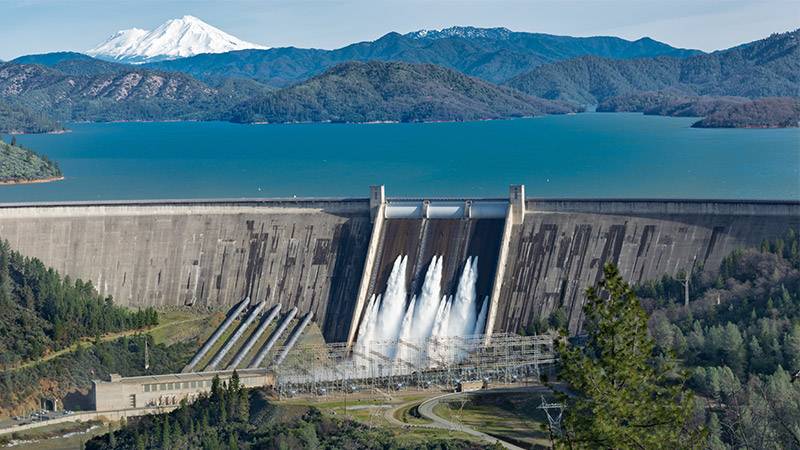In a historic endeavor to restore natural ecosystems and mitigate the impacts of climate change, California is spearheading the world’s largest dam removal project. The initiative, which is centered around the Klamath River, aims to dismantle a series of massive dams that have regulated the river’s flow since the 1950s. The Iron Gate Dam, the last of the four nearly 200-feet tall dams, is set to be the final structure to be decommissioned, marking the end of an era of infrastructural dominance over environmental conservation.
The Klamath River Renewal Corporation (KRRC) is at the forefront of this monumental task, with its CEO, Mark Bransom, emphasizing the urgent need to “rewild” — a movement grounded in restoring nature to its pre-human intervention state to counter the adverse effects of climate change. Bransom outlines plans to initiate restoration activities immediately after draining the reservoir, focusing on stabilizing the remaining sediments through the cultivation of native vegetation.
This initiative comes at a critical time when the nation grapples with extreme weather conditions, including record-setting droughts and catastrophic floods, exacerbated by climate change. Ann Willis, the California regional director for American Rivers, a nonprofit championing clean water, underscores the rapid healing a river undergoes once a dam is removed, initiating almost instantaneous self-restoration processes.
The urgency of the project is further highlighted by the U.S. Army Corps of Engineers, which has identified a staggering 76% of the existing U.S. dams as “high hazard potential,” signaling a pressing threat to both human life and property due to potential failures or misoperations. The Iron Gate Dam, in particular, has been a source of toxic algae proliferation, posing significant health risks and disrupting the natural ecosystem.
“One of the fastest ways to heal a river is to remove a dam,” Ann Willis, the California regional director for American Rivers, a nonprofit focused on protecting clean water, said. “The good news is, when you have the opportunity to unjam a river, the river can start to restore itself almost from the moment that the water starts flowing again.”
For over two decades, tribal activists along the Klamath River have been vocal advocates for the decommissioning of these dams, pointing to the severe ecological and cultural repercussions, including the near extinction of salmon — a sacred element in the ceremonies of the Karuk, Yurok, and Hoopa tribes. Barry McCovey Jr., director of the Yurok Tribe Fisheries Department, expressed both the historical oversight in not seeking tribal input during the dams’ inception and the current collective anticipation and hope as the removal process finally commences.
Despite the substantial financial burden of $500 million, borne by taxpayers and contracts with the local electric power company, PacifiCorps, proponents argue the restoration of nature to its primal state justifies the cost. The endeavor has not been without opposition, with concerns over diminished property values and legal battles spearheaded by the Siskiyou County Water Users Association.
Drawing inspiration from the successful Elwha Dam Removal project in Washington state in 2011, which facilitated the rapid return of salmon and the rejuvenation of previously sediment-starved areas, advocates are optimistic about replicating this success in the Klamath River. According to ABC News, the project stands as a precursor to even more ambitious federal proposals, including a $33.5 billion plan to breach four dams on the lower Snake River in eastern Washington, as the nation progressively leans towards harmonizing infrastructural development with environmental preservation, fostering a symbiotic relationship with nature for the generations to come.
More inspiring green news similar to this:


